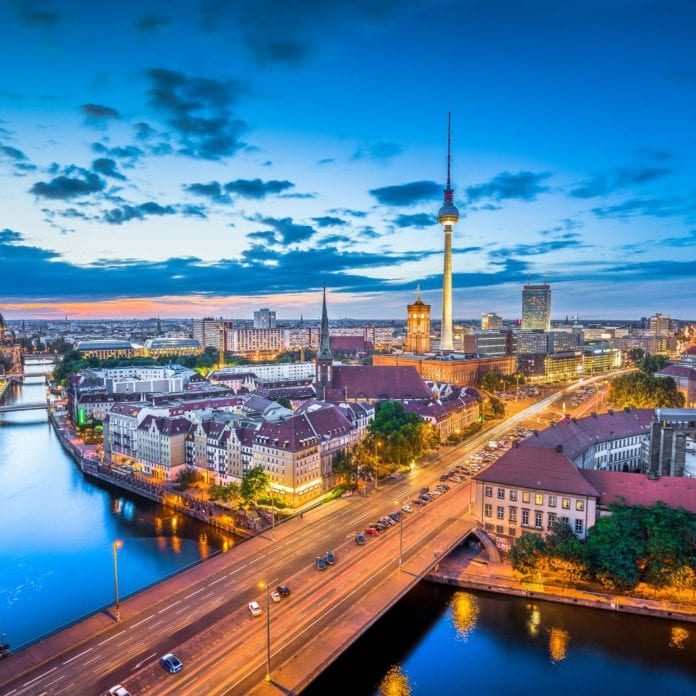Deutsche Telekom recently said its 5G network already reaches 94% of the overall population in Germany
During 2022, Germany’s largest operators have been focusing on the expansion of their 5G networks, with some operators already offering coverage to more than 80% of the country’s population.
German carrier Deutsche Telekom recently said its 5G network already reaches 94% of the country’s population. The European carrier noted that it expects its 5G technology could reach 99% of the Germany population by 2025.
The operator also highlighted that more than 80,000 antennas are currently transmitting 5G, of which around 8,000 antennas will be providing 5G in the 3.6 GHz band by the end of 2022.
In June, Deutsche Telekom announced it was for the first time using spectrum in the 700 MHz range to provide 5G service. The European operator said that the use of the 700 MHz band improve mobile communications coverage in rural areas across Germany.
With this new addition, the telco is now offering 5G services via three different frequencies. In addition to the 700 MHz frequency, there are two other radio bands: 2.1 GHz and 3.6 GHz.
The telco kicked off the rollout of its 5G network in a limited number of cities across Germany at the beginning of July 2019.
Meanwhile, Vodafone Germany said its 5G network is already providing coverage to 65 million people across the country, representing nearly 80% of Germany’s population.
Since the beginning of 2022, Vodafone technicians have commissioned 5,450 5G sites with more than 16,000 additional antennas. In total, Vodafone has already equipped 36,000 antennas with 5G.
The telco also noted that its 5G Standalone network is currently available to nearly 20 million people across Germany. Vodafone previously said that 5G SA technology will reach nationwide coverage by 2025. The German telco had already deployed over 3,000 base stations for the provision of 5G SA services.
Nationwide, more than 227 new base stations for the provision of 5G SA services went on-air in November and December alone, according to the telco.
Vodafone Germany launched 5G Standalone last year
Last year, Vodafone Germany launched its 5G Standalone (SA) network in partnership with Ericsson, Nokia, Qualcomm and Oppo.
For the 5G expansion, Vodafone is relying on frequencies in the 3.6 GHz, 1.8 GHz and 700 MHz bands in large urban areas, residential areas and suburbs, and rural areas across Germany.
Also, Telefónica Deutschland/O2, controlled by Spanish telco Telefónica, said its 5G network is operating over 18,000 antennas in the country.
The telco said that this network infrastructure is enabling the provision of 5G services to 75% of the German population. With this expansion progress, the telecommunications provider has exceeded its original target of covering half of the population with 5G technology by the end of this year.
By the end of July, Telefónica Deutschland/O2 had said it has already deployed nearly 6,000 5G antennas in the 3.6 GHz frequency. The telco said that the 3.6 GHz frequencies are used primarily in densely populated regions. Cities with the higher number of 3.6 GHz stations include Berlin, Munich, Hamburg and Cologne.
The telco also said it is currently focusing on the provision of 5G in rural areas across Germany via spectrum in the 700 MHz band.
The carrier also said it expects to cover the country’s overall population with 5G by the end of 2025.
Telefónica Deutschland had said that it is technically ready to deploy a nationwide 5G Standalone network but noted that the infrastructure will be fully activated as soon as 5G Standalone offers real added value for customers, and when enough devices in the market support 5G SA.
Meanwhile, German operator 1&1 had previously said that it plans to launch 5G mobile services in the summer of 2023. The telco also expects to initially offer 5G services via Fixed Wireless Access (FWA) technology.
In August, 1&1 completed the first live test in its new 5G network. In the tests, 1&1 said that it achieved speeds of over 1 Gbps and stable data transfers of around 8 terabytes per customer within 24 hours.
1&1 had selected Japanese company Rakuten Group to design, build and operate a fully virtualized mobile network based O-RAN technology.

